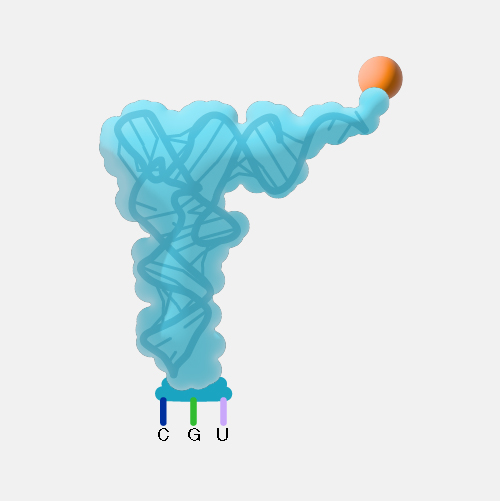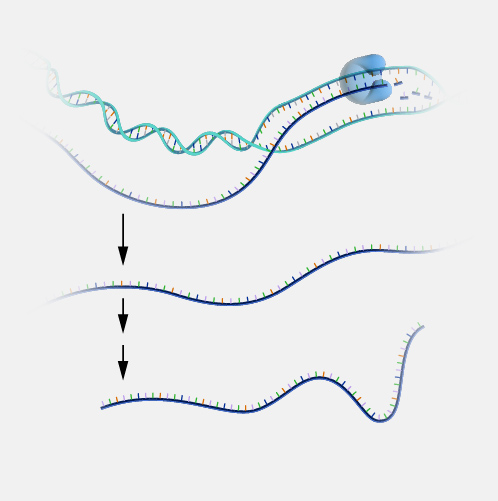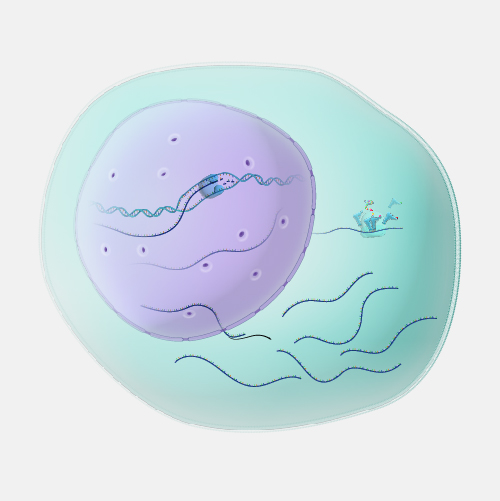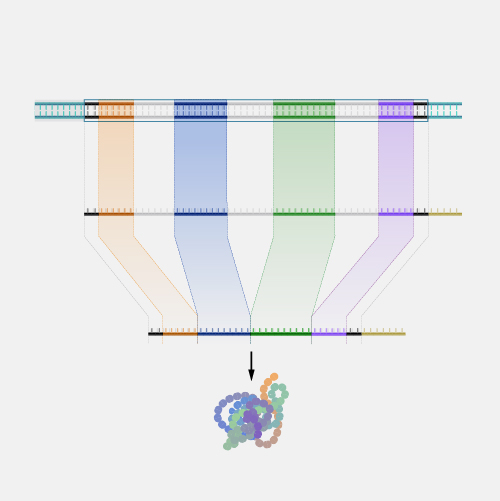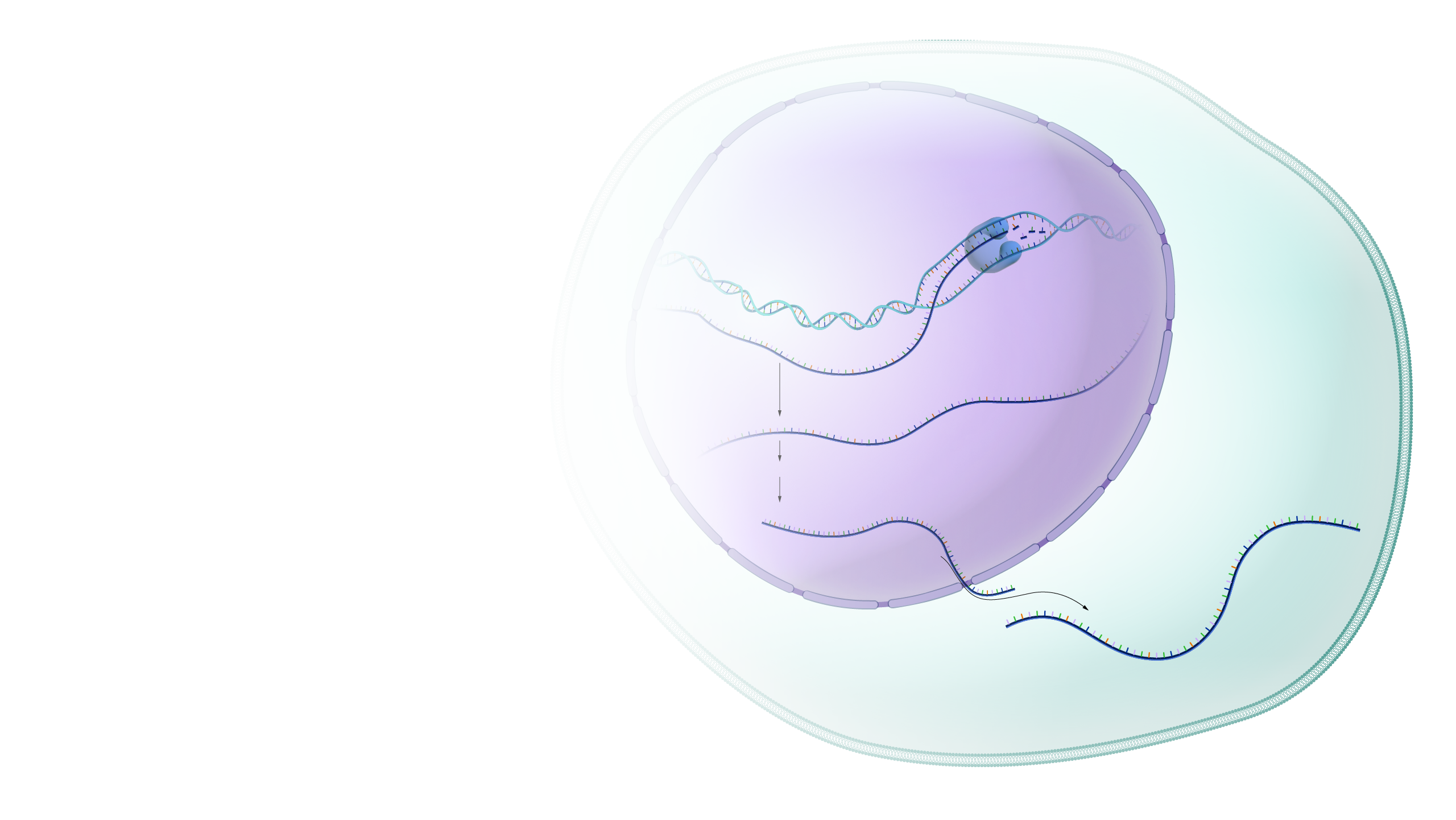
Messenger RNA (mRNA)
Definition
Messenger RNA (abbreviated mRNA) is a type of single-stranded RNA involved in protein synthesis. mRNA is made from a DNA template during the process of transcription. The role of mRNA is to carry protein information from the DNA in a cell’s nucleus to the cell’s cytoplasm (watery interior), where the protein-making machinery reads the mRNA sequence and translates each three-base codon into its corresponding amino acid in a growing protein chain.
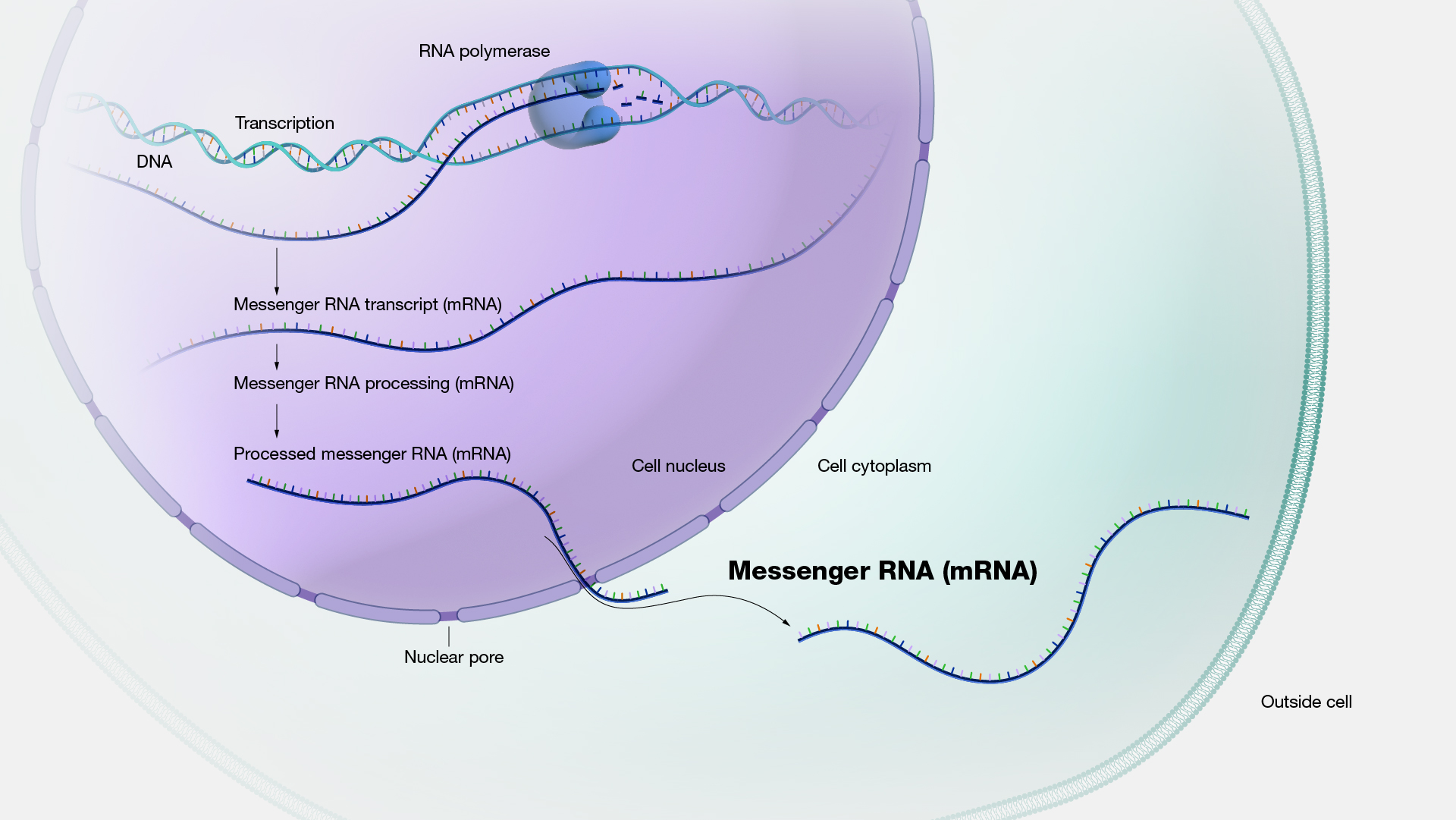
Narration
Messenger RNA or mRNA. So mRNA really is a form of nucleic acid, which helps the human genome which is coded in DNA to be read by the cellular machinery. So we have DNA in our nuclei. And then we have ribosomes and other cellular organelles which translate DNA. But between the DNA code itself, and the machinery that uses DNA to make proteins, there has to be a translator. And mRNA is actually the translated form of DNA that the machinery can recognize and use to assemble amino acids into proteins. So this is really a fundamental link between what we think of as being the code of life and the actual cell being able to construct a living organism. And in that sense, although DNA gets discussed a lot more than RNA, mRNA is a really crucial piece of the fundamental way in which the living organism is created.


